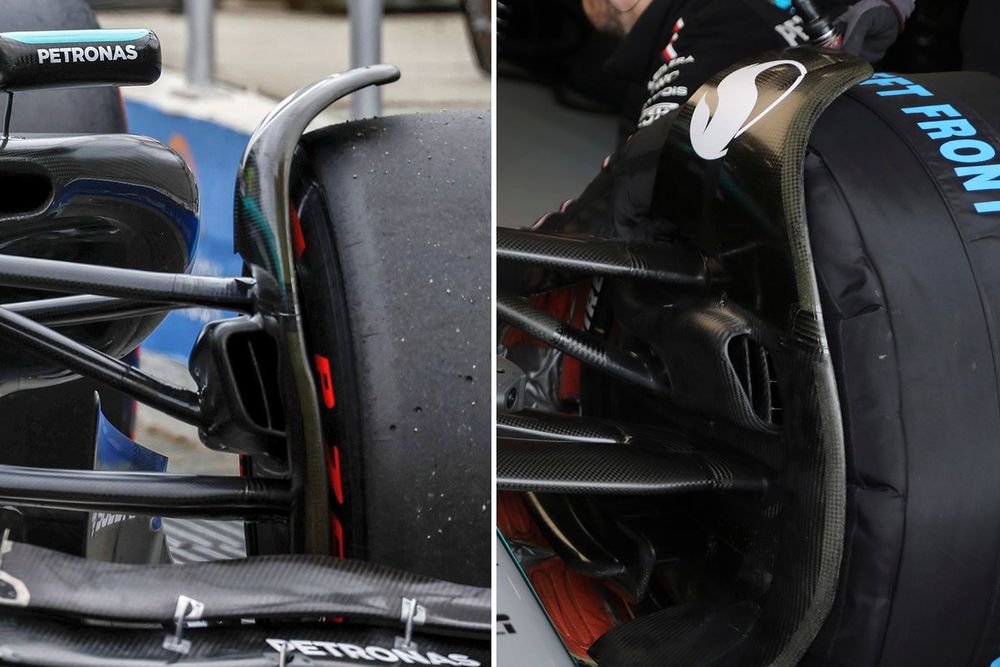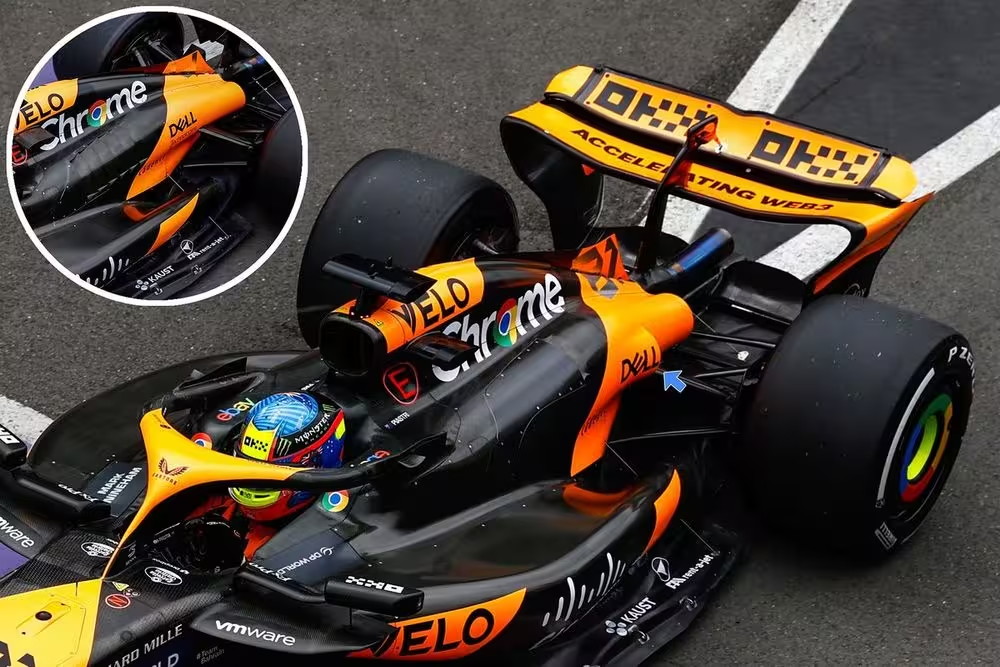McLaren continued to pile the pressure on Red Bull at Formula 1’s British Grand Prix as it arrived with a new lower downforce rear wing assembly to boost the MCL38’s top speed.
The team also had three different beam wing specifications on hand, as it looked to find the right balance between downforce and drag reduction for the circuit and the conditions.
The new rear wing continues to leverage the same DNA as the other downforce options that the team has as its available options, albeit with a mainplane and top flap that take up much less of the available box region allowable within the regulations.
Notably, the central portion of the wing is flatter for longer but also has a much less aggressive taper as it approaches the endplate, where the corner radius is also less tightly wound as a result.
To match the trailing edge of the mainplane, the upper flap’s geometry is also less twisted across its span and features a half-moon notch in the centre of the trailing edge, rather than the v-shaped alternative found on the other rear wing solutions.
The tip section of the wing has also been modified, as the outermost trailing edge section has been trimmed, taking a triangular section of material away. This will alter the behaviour of the tip vortex, in order that it falls in line with the changes made to the surrounding surfaces (red arrow).
McLaren MCL38 rear cooling comparison (arrowed)
Photo by: Uncredited
The team also had a different rear engine cover and cooling arrangement at Silverstone, with a flared opening used to help reject heat, rather than having the upper cooling louvres open.
However, after trialling the solution it opted to bench it for the rest of the weekend, with it likely to feature in some of the upcoming races when both might be needed to reject the heat being generated.
Mercedes chasing more gains

Mercedes W15 front brake duct comparison
Photo by: Uncredited
Mercedes, which has also been on an upwards trajectory of late, took a similar route to McLaren for the British Grand Prix, as it had trimmed front and rear wings on hand to cater for the challenges posed by the Silverstone circuit.
But, rather than working on cooling solutions for its engine cover, it made some adjustments to the front and rear brake ducts instead.
The new arrangement at the front of the car centres around the size and shape of the inlet, with a smaller variant preferred at Silverstone.
This was in order to improve…
Click Here to Read the Full Original Article at Autosport.com – Formula 1 – Stories…

